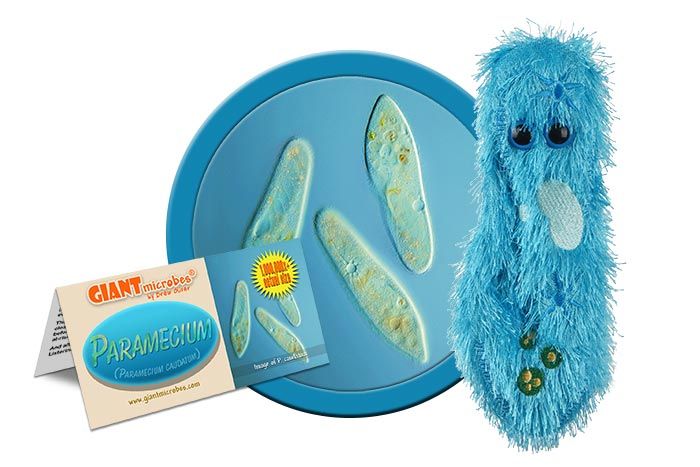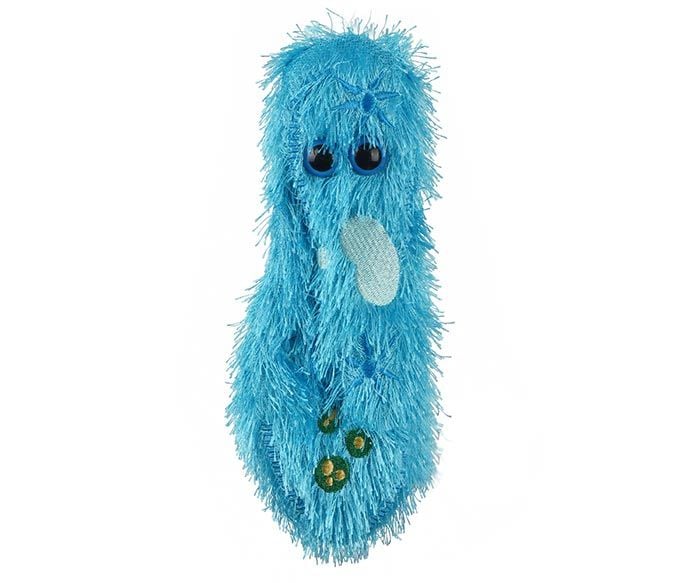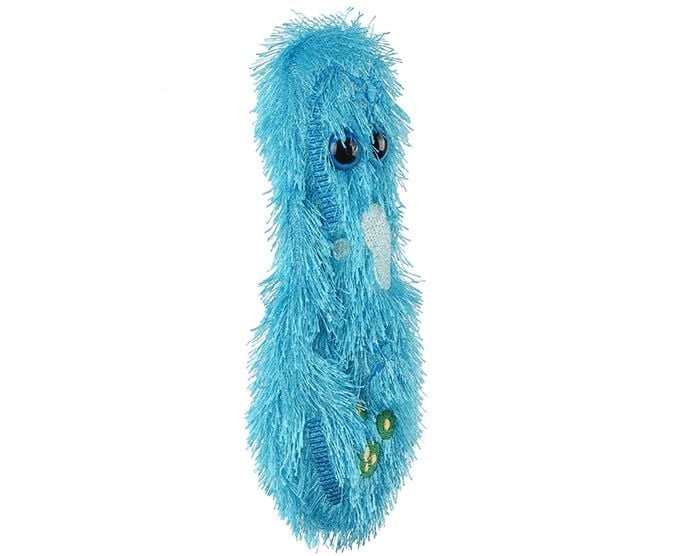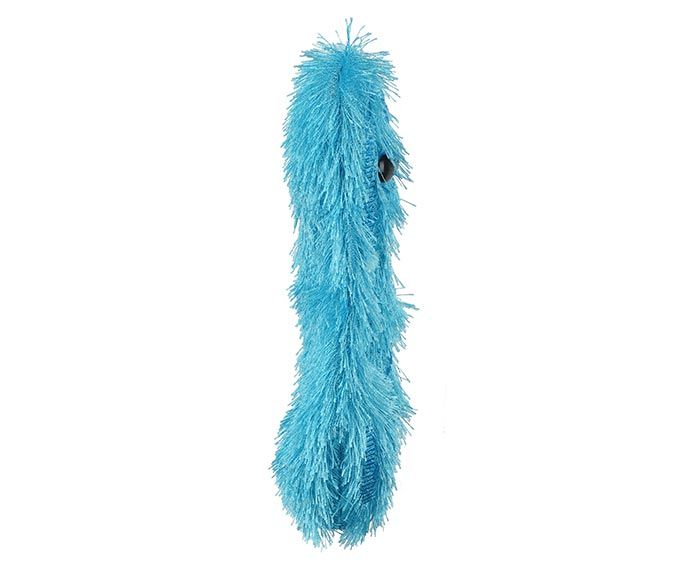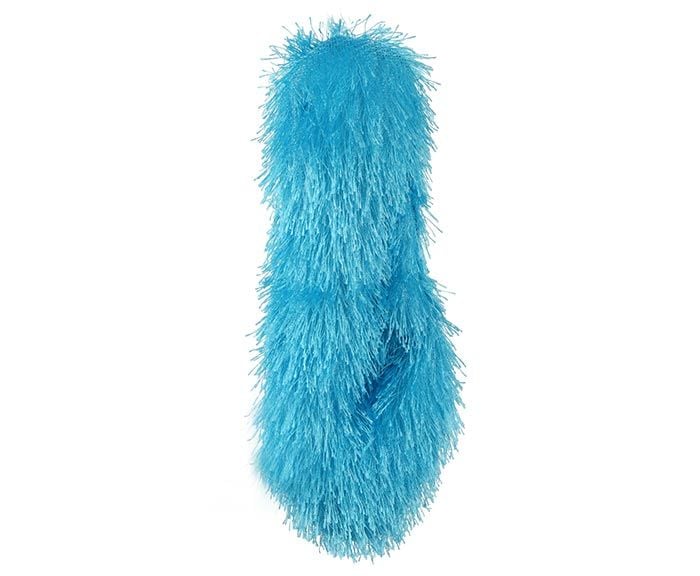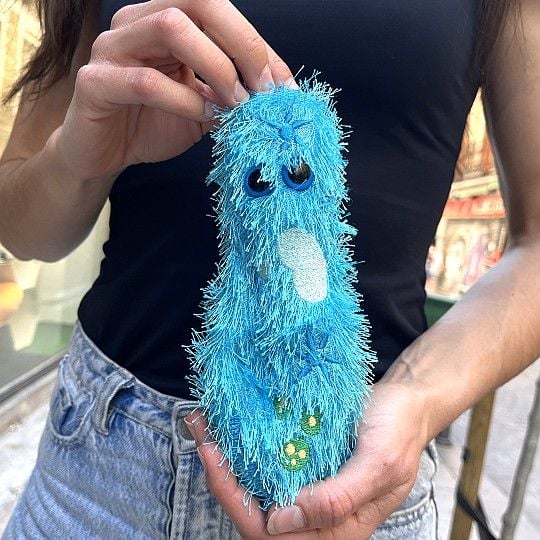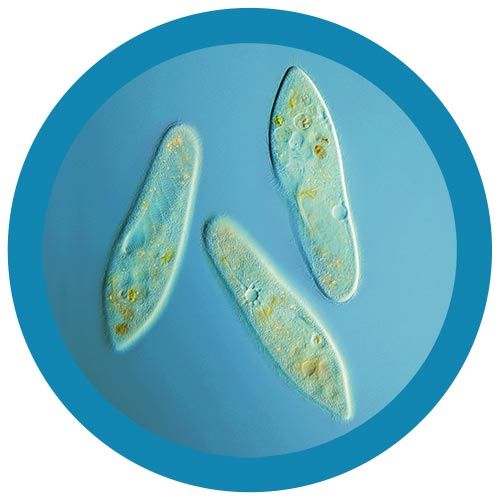Paramecium (Paramecium caudatum)
Product Details
Additional Information
| Sizes | Giantmicrobes are based on actual microbes, cells, organisms and other critters, only 1,000,000 times actual size! Gigantic (GG) 16-24" XL (XL) 10-15" Original (PD) 5-8" Keychain (KC) 2-4" with clip |
|---|---|
| Materials | Plush from all new materials. Stuffed with polyester fiber fill. Surface washable: sponge with water & soap, air dry. |
| Packaging | Each plush microbe includes a printed card with fun, educational and fascinating facts about the actual microbe or cell. |
| Safety | Every product meets or exceeds U.S. and European standards for safety. For ages 3 and up. |
All about Paramecium (Paramecium caudatum)
FACTS: The paramecium is one of the poster children of the microscopic world. Widely distributed in freshwater environments, this slipper-shaped single-celled organism is easily located and often studied in schools because of its representative microscopic structures.
For example, it's rhythmically waving hairy coat of cilia, which propels the cell forward and backward in a corkscrew-fashion, can be seen even through a small microscope. The cell is also coated with spiky trichocysts, projectiles which provide a layer of porcupine-like protection.
Its contractile vacuoles – star-shaped bubbles which pump out the excess water constantly being absorbed by osmosis – work tirelessly to prevent the paramecium from exploding.
The creature's gaping mouth (or buccal cavity) is a fearsome prospect to the bacteria and other microorganisms that comprise the paramecium's prey; and its cytopharynx can be seen snaking like a throat down the length of its body, depositing nutrients into the food vacuoles which serve as its stomachs.
But the paramecium is not purely an epicurean. Its brain is readily apparent in the macronucleus that contains the DNA which governs the cell. And the micronucleus, activated during reproduction, shamelessly floats nearby within the gooey cytoplasm – assuring that paramecia will continue to delight and intrigue intrepid surveyors of the microscopic kingdom.
| Description | Paramecia are the most complex single-celled organism on Earth and make the perfect tool for teaching science! |
|---|
| Name | Its name comes from the Greek word “paramekes”, which describes the cells’ oblong, oval shape. |
|---|
| Actual Size | 50 – 300 microns, which is 6,000 times smaller than a paperclip! |
|---|
| Where It Lives | A paramecium is a tiny, single-celled creature that lives in freshwater ponds and lakes where algae are found. Paramecia have organized digestion systems that consist of a mouth, stomach, and excretion system. They use the finger-like extensions around their body, called cilia, to gather food toward their mouths. Paramecia are docile creatures that don’t harbor diseases. In fact, they eat bacteria for breakfast! |
|---|
| History | The earliest fossil discovered of Paramecia dated back at least 65 million years ago. They are possibly the oldest creatures on earth, emerging nearly 4 billion years ago! |
|---|
| Fascinating Facts | Paramecia are known for their ability to react to environmental stimuli. When they sense any danger or negative stimulus, they immediately back up and change directions until it gets around the obstacle. |
|---|


